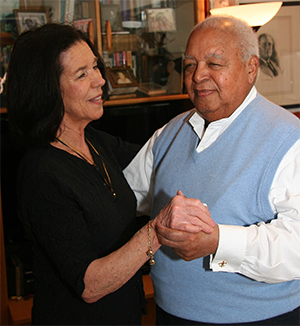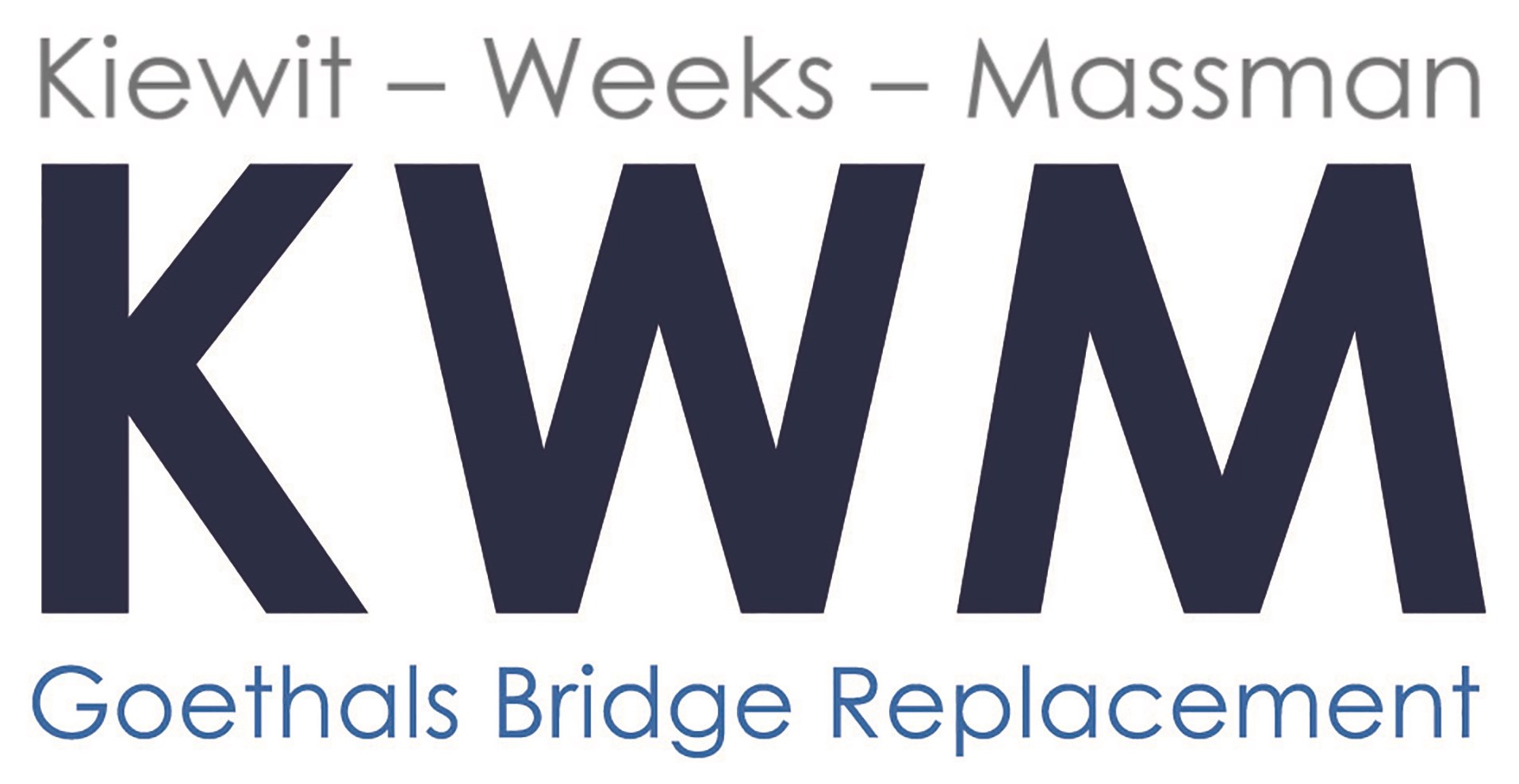From the Back of the Bus to Market Street, Suite 1000
01/28/2014
 By Marie Sheahan Brown By Marie Sheahan BrownTen years before Rosa Parks made history in her calm, determined, tired way, Gerald W. Johnson refused to obey the “Coloreds Behind This Sign” law on a New Orleans city bus. In 1945, he had just finished overseas duty with the United States Navy where, despite discriminatory policies, black and white sailors gained mutual respect serving shoulder to shoulder. Gerald had had enough of segregation in his hometown.
The bus driver threatened to call the police at the next stop. Young Gerald, perhaps imprudently, retorted, “You can call yo’ momma. I ain’t sittin’ behind no sign.”
Gerald and his companion got off at the next stop and disappeared deftly into the New Orleans crowd.
Hearing of this, his large extended family took up a collection. They presented it as a gift, pleasantly suggesting that Gerald seek his fortune in San Francisco. Only years later did a relative reveal that they weren’t raising money just to be nice. They truly feared for Gerald’s safety in New Orleans after the bus incident.
Gerald settled in the Fillmore District of San Francisco. In this beautiful city of hills, ocean, bay, and bridges, he dove into nearly seventy years (and counting) of hard work and social-justice activism enlivened by his love of good food and libations; good company and conversation; good music and dancing; and lasting connections with his family, several of whom had also moved to San Francisco. People of any race or religion sat at his dining room table, and still do today, feasting for hours on Gerald’s home-cooked New Orleans classics.
Having learned from his parents, Arthur and Wilhelmina, the strong work ethic, creativity, embrace of risk along with freedom—attributes of entrepreneurs—Gerald took up carpentry, sold recycled auto bumpers, and later started a landscaping business. Besides working for customers, he set about improving his new home city. Treeless San Francisco sidewalks looked naked to one accustomed to luxuriant tree-lined streets in New Orleans. He started planting trees for all to enjoy.
He soon noticed that many San Francisco businesses and agencies, while not practicing the overt segregation entrenched in the South, nevertheless failed (by prejudice, cronyism, or ignorance?) to offer fair business opportunities for blacks, Asians, and other minorities.
In the Fillmore District, where many blacks lived and shopped, no stores hired black employees in the mid-1940s. Gerald thought this ought to be known. He organized his first picket line. Eventually, Fillmore stores started hiring blacks.
Always interested in politics, Gerald has been politically eclectic, aligning with at least three political parties over his lifetime. His allegiance has depended on how well, in his view, a party genuinely serves the cause of fairness and opportunity for all citizens of the United States of America.
Educated through the eighth grade in New Orleans, Gerald learned quickly to value the printed word for life-long self-education, civic and social awareness, and influence. He soon caught the publishing bug, working as advertising manager and interviewer for The Reporter in San Francisco (now The Sun-Reporter). Its motto attracted him: “That no good cause shall lack a champion, and that evil shall not thrive unopposed.” Gerald once interviewed Georgia Governor Ellis G. Arnall at a press conference, questioning the governor about black civil rights.
In 1969, the Martin Luther King–Marcus Garvey Square Cooperative Apartments were slated for the Fillmore District—the first in San Francisco to be built by black construction workers. Gerald, finding no black-owned lumber companies in the San Francisco area, started one.
Much of Gerald Johnson’s identity derives from his efforts in business and social justice; often, his personal life has interwoven with his business life. Home life, however, did not always flow amicably. By 1971, Gerald had married and divorced three times, with one child the fruit of each marriage. All three children, now professionals living in San Francisco, remain close.
Valerie Voorhies changed Gerald’s personal relationship pattern forever, by sheer force of beauty, intelligence, and kindliness.
They were an unlikely couple.
Valerie and her sister grew up in Redding, California, the children of a prominent optometrist, George, and Wilma, a nurse. Wilma was raised in Mississippi before and during the Depression. She attended nursing school in St. Louis, Missouri, where, as a white woman, she refused to sleep in a segregated “white” dormitory—no matter the warned-of consequences to her nursing career. Wilma’s anti-racism and necessary courage would imprint her daughters.
Wilma moved to Redding for a nursing job, where she met her future husband. Their two daughters attended Catholic schools. Valerie earned her bachelor of arts at Holy Names College in Oakland, California. Later, she earned a master’s degree in philosophy, summa cum laude, at The Catholic University of America in Washington, DC. Following in her mother’s steps, Valerie embraced Democratic Party ideals, volunteering in more than one presidential campaign.
After college, preferring city energy to the more relaxed pace in her hometown, Valerie moved to San Francisco in 1969 and taught at Saint Agnes Elementary School. She became good friends with a neighbor in her apartment building.
One day in 1972, the neighbor announced, “I must introduce you to someone.” She arranged—and joined in—the meal at a nice restaurant. The immediate mutual attraction between Gerald and Valerie burgeoned into a magnetic sphere that has drawn innumerable friends, family members, and business colleagues into unique interconnections spanning decades.
It’s not unusual, for example, to find at Gerald and Valerie’s dining room table men and women who serve as waiters at their favorite restaurants in San Francisco or New Orleans. At the same meal one might find New Orleans jazz street musicians, construction industry leaders, artists, lawyers, foresters, post masters, teachers, Catholic priests and nuns, Baptists, Buddhists, atheists, Democrats, Republicans, independents. Included at the table by speakerphone might be a hard-working Southern farmer’s wife, a spicy New Orleans lady cab driver displaced to Dallas by Hurricane Katrina, a business colleague in Brooklyn, friends in Ireland or Mexico, and any number of family members.
Gerald and Valerie’s marriage has melded into a life-long business partnership. Valerie left her teaching career to join Gerald’s lumber business. Gerald would bid on lumber contracts, which involved an intricate process even in those days. Valerie invented a bid-tracking database and system to find contracts on which to bid, store, and update details of these contracts, and track the progress of their bids.

Starting in 1976, years ahead of many small business owners, Gerald and Valerie harnessed the efficiency of computers for their own accounting and bid-tracking systems.
Valerie’s expanding database includes public agencies, associations, prime contractors, subcontractors, suppliers, and other small businesses, all coded by industry. They continually upgraded their technology and software programs to enhance their efforts.
By the early 1980s, they had honed the bid-tracking system for their lumber business. They had also discovered that at least one major company offered similar services to small businesses—a service that Gerald and Valerie had tried but found insufficient for their needs. An idea germinated. They realized that their system could help other small businesses to find opportunities and to grow without having to invest in expensive technology.
“Our database capacities grew as new needs presented themselves,” says Valerie, who knows the system intimately.
In 1984, they created Small Business Exchange as the vehicle in which to carry their experience, ideas, and services to other small businesses. In 1985, at their multitasking dining room table, they pasted up with wax rollers the first offset-printed columns of their first Small Business Exchange newspaper.
Meanwhile, they were about to start a New Orleans-style restaurant in San Francisco. They had leased a building in a desirable location and had planned and printed the menus.
Then the paper took off. It did so because it addressed real needs and—sometimes quite literally—helped build necessary bridges. By 1984, twenty years after President Lyndon Johnson signed the Civil Rights Act of 1964, laws required government agencies and prime contractors to make good faith efforts to involve Disadvantaged Business Enterprises (DBEs) in public infrastructure and other publicly funded projects. “The first six hundred client-subscriber business owners were whites who needed to reach out to DBEs,” according to Gerald. “The paper was well received.”
(Disadvantaged Business Enterprises can be used as an umbrella term that includes Minority Business Enterprises, Woman Business Enterprises, Disabled Veteran Business Enterprises, Small Business Enterprises, and the like.)
Small Business Exchange (the newspaper and the accompanying services) built bridges among government agencies that needed work to be done; prime contractors qualified to bid on large projects; and certified DBEs able to bid on various aspects of the work as subcontractors, suppliers, or professionals such as architects or engineers. As part of its service, Small Business Exchange (SBE) carefully documented these good faith outreach efforts.
Gerald and Valerie didn’t have time for both a newspaper and a restaurant. Fortunately, another aspiring restauranteer acquired the building lease, and the Johnsons continued to serve delicious New Orleanean meals at their dining room table.
These were the days before the Internet; fax machines remained newfangled. The small business world largely relied on print, postal service, telephone, and face-to-face meetings. The Small Business Exchange newspaper provided information that small businesses didn’t have time or staff to research. In 1989, SBE started a daily Fax-A-Bid to augment the printed newspaper for subscribers.
As each new need surfaced, they improved their system and their database, connecting the entities in mutually helpful ways. “We have invested in technology to provide critically time-sensitive information,” Gerald explains. “DBEs compete with the big boys, and we want to ensure that the DBEs get accurate, timely information.” SBE continually updates its nationwide database of over 1.6 million businesses with downloads and with corrections made by live call center staff who, from remote locations, can immediately update the records in our system.
In 1989, shortly after desktop computers began to transform publishing, SBE adapted to advance the dream. An IBM report highlighted SBE as the first business to use Macintoshes with IBM’s AS/400 for desktop publishing.
In the 1990s, the Internet moved beyond institutional systems to the World Wide Web. Business websites became de rigueur for many types of businesses and agencies, including the news media. SBE launched www.sbeinc.com in 1995, making it interactive in 1997.
Starting in 1987, technology enabled SBE to open remote offices in Phoenix, Los Angeles, and Sacramento. In 2000, SBE upgraded its technology to allow telecommuting for employees and independent contractors in remote locations. These include the webmaster, database programmer, live call center staff, freelance writers, graphic designers, and others.
An underlying goal of Gerald and Valerie has always been to promote and facilitate fairness in business opportunities so that DBE owners and employees can earn a living to support themselves, their families, and their communities. They have consistently practiced these principles themselves. They expect employees and independent contractors to do good work, and they have always hired ethnically diverse employees and independent contractors—fellow small business owners.
Small Business Exchange has served clients in the Northeastern United States since 2009. Always dreaming forward, Gerald and Valerie have sought the opportunity and means to publish a Northeast edition of Small Business Exchange, the better to serve small businesses, prime contractors, and agencies in that region.
Serendipitously, two of SBE’s independent contractors, who first joined SBE in other capacities, have long publishing backgrounds. Leslie McMillan, SBE Northeast manager, and Marie Sheahan Brown, SBE Northeast bid and outreach editor, also happen to be identical twins.
Today [January 28, 2014], on the publication date of Small Business Exchange Northeast’s inaugural edition, Gerald Johnson celebrates his eighty-ninth birthday with his beloved wife and business partner, Valerie Voorhies. With youthful eagerness, he will go to the office and set to work on his latest ideas for innovation and outreach. Retirement is not a word in his vocabulary.
As is their custom, they will enjoy lunch with family and friends at a favorite restaurant near the office. Later, they will ascend steep hills to their attractive townhouse overlooking San Francisco, its waterways, and its bridges.
Cheers and happy birthday, Mr. Johnson. It’s been quite a near-century.
Since 1991, Marie Sheahan Brown, a multifaceted member of the Chinook Indian Nation, has relished home-cooked meals, interesting guests, and lively conversations at Gerald and Valerie’s dining room table. As bid and outreach editor for Small Business Exchange Northeast, she insisted on including this profile in our inaugural edition.
 Back To News |
||
|
|
||
|
© 2024 Small Business Exchange, Inc. |
||














